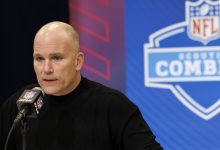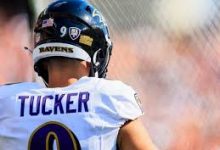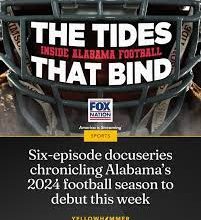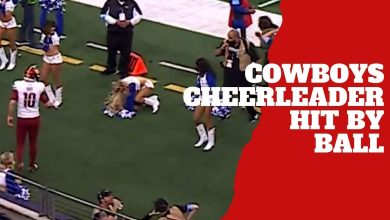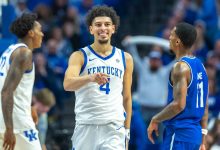From autographs to millions: How NIL opportunities could have elevated Johnny Manziel’s legacy beyond the football field’s limits.
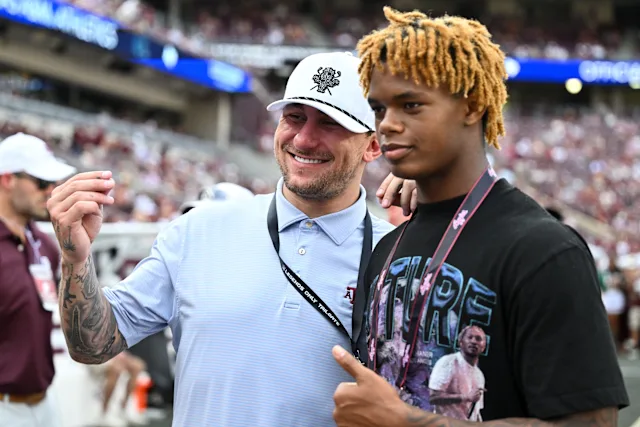
Johnny Manziel is one of the most electrifying figures in college football history. Known for his dynamic playing style, charismatic personality, and his “Johnny Football” persona, Manziel captured the nation’s attention during his time at Texas A&M. His achievements on the field, including becoming the first freshman to win the Heisman Trophy in 2012, cemented his legacy as a college football icon. However, Manziel’s story is also one of untapped potential off the field—particularly in the realm of Name, Image, and Likeness (NIL) opportunities, which were not available during his college years.
Today’s college athletes have a chance to monetize their personal brands in ways that previous generations couldn’t imagine. From endorsement deals to social media influence and personalized merchandise, NIL has transformed college sports into a marketplace of opportunity. If Manziel had played in the current NIL era, his legacy could have transcended autograph signings and fleeting fame to become a multi-million dollar brand with lasting cultural impact.
This article explores how NIL could have dramatically changed Johnny Manziel’s career trajectory, financial fortune, and influence—turning a college football star into a global icon beyond the gridiron.
The Manziel Phenomenon: More Than Just a Football Player
Johnny Manziel’s impact on college football was undeniable. He burst onto the scene as a freshman at Texas A&M in 2012, dazzling fans with his improvisational style, clutch performances, and sheer competitiveness. His ability to make plays with both his arm and his legs made him a nightmare for defenses and a fan favorite.
Beyond his on-field exploits, Manziel was a natural entertainer. His confidence, flair, and off-field antics made him a media magnet. From interviews and commercials to social media posts, “Johnny Football” cultivated a personal brand that resonated with millions. However, during his era, NCAA rules strictly prohibited athletes from profiting off their name, image, and likeness. Manziel’s only legal avenues to make money were limited to autograph signings and appearances, which paled in comparison to today’s lucrative NIL deals.
What Is NIL and Why Does It Matter?
Name, Image, and Likeness (NIL) rights allow college athletes to earn compensation from endorsements, sponsorships, social media promotions, merchandise sales, and more. This paradigm shift—implemented in 2021—empowers athletes to monetize their fame legally while maintaining NCAA eligibility.
For athletes with Manziel’s charisma and national profile, NIL opens doors to:
-
Endorsement Deals: Partnering with major brands for advertisements and campaigns.
-
Social Media Monetization: Leveraging followers for sponsored content and promotions.
-
Personal Merchandise: Selling branded apparel, accessories, and digital goods.
-
Appearances and Clinics: Charging fees for public appearances, autograph signings, and coaching clinics.
-
Content Creation: Developing podcasts, YouTube channels, or other media ventures monetized through ads and sponsorships.
For Manziel, who already had a captivating personality and a large fanbase, NIL would have provided a platform to capitalize financially on his popularity at the peak of his career.
How NIL Could Have Transformed Manziel’s Financial Landscape
During his college years, Manziel reportedly earned only minimal income from autograph signings—often under NCAA-imposed limits and informal arrangements. His earnings were modest compared to what top athletes can make today.
Had Manziel been playing in the current NIL era, his earning potential would have been substantial. Consider these scenarios:
-
Major Brand Endorsements: Given his marketability, Manziel could have secured deals with sports apparel giants like Nike or Adidas, beverage companies, and lifestyle brands eager to tap into his youth appeal.
-
Social Media Influence: Manziel’s substantial following on platforms like Twitter and Instagram could have been monetized through sponsored posts, live-streamed Q&As, or exclusive content subscription services.
-
Custom Merchandise: “Johnny Football” branded jerseys, hats, and apparel could have generated significant sales, especially given his devoted fanbase.
-
Event Appearances: Paid appearances at football camps, autograph sessions, and speaking engagements could have created additional revenue streams.
-
Digital Ventures: Manziel could have launched podcasts or YouTube channels sharing insights on football, life, and entertainment, monetized through ads and partnerships.
Financial analysts estimate top-tier NIL deals for college quarterbacks can reach millions annually. For Manziel, a multi-million dollar NIL portfolio during his college career would not have been unrealistic.
NIL’s Impact on Manziel’s Brand Longevity
One challenge with college football fame is its fleeting nature. Many stars shine brightly for a short period before fading from public view. NIL opportunities encourage athletes to build sustainable personal brands, creating income and influence beyond their playing days.
For Manziel, NIL could have extended his relevance and career in several ways:
-
Maintaining Fan Engagement: By interacting with fans through social media and branded content, Manziel could have kept his name in the spotlight.
-
Diversifying Income Sources: Income from endorsements and digital ventures could have provided financial stability beyond football.
-
Building a Post-Football Career: NIL activities could have laid the groundwork for careers in media, coaching, or business.
-
Rehabilitating Image: Given Manziel’s off-field challenges, a structured NIL presence might have helped reshape public perception by showcasing maturity and community involvement.
With NIL, Manziel’s legacy might have evolved from a one-dimensional football story to a multifaceted brand with lasting cultural impact.
Lessons from Current NIL Stars
Current college athletes leveraging NIL provide a roadmap for what Manziel’s era missed:
-
Quarterbacks Like Caleb Williams: Williams signed lucrative deals with major brands, making millions while still in college.
-
Social Media Influencers: Athletes with strong online presences generate significant income through sponsorships and content.
-
Entrepreneurial Athletes: Some players launch product lines or collaborate with artists and entertainers, expanding their reach.
Manziel’s charisma and public profile align with these success stories. He had the personality to engage fans and the on-field talent to attract brands—both prerequisites for NIL success.
Could NIL Have Changed Manziel’s On-Field Legacy?
While NIL primarily affects off-field income, it indirectly influences on-field performance by reducing financial stress and allowing athletes to focus on their game. Additionally, the increased visibility from endorsements can raise a player’s national profile, influencing award voting and media narratives.
For Manziel, the combination of NIL resources and enhanced brand-building could have:
-
Improved access to better training, nutrition, and recovery resources.
-
Increased media attention boosting his Heisman campaign and national reputation.
-
Encouraged greater professionalism through brand partnership requirements.
In short, NIL could have amplified Manziel’s already impressive college career and helped cement his place among college football’s all-time greats.
The Broader Cultural Impact
Johnny Manziel’s story is not just about football; it’s about cultural influence. His style, swagger, and willingness to break norms resonated with a generation of fans craving authenticity. NIL would have allowed him to express this identity more freely and profitably.
From apparel collaborations to philanthropic initiatives, NIL could have enabled Manziel to shape cultural conversations around football, masculinity, and celebrity. This broader impact would extend his legacy well beyond the football field.
Johnny Manziel’s college career was historic, but it was also constrained by the NCAA’s outdated amateurism rules that limited athletes from capitalizing on their fame. The advent of NIL has revolutionized college sports, opening doors for athletes to monetize their personal brands while still in school.
Had NIL existed during Manziel’s time, his legacy would have looked dramatically different—not just as a player but as a cultural icon and business entrepreneur. From lucrative endorsement deals to sustained fan engagement and brand longevity, NIL opportunities could have transformed Manziel from a star quarterback signing autographs to a multimillion-dollar brand with lasting influence.
While Manziel’s story remains compelling, imagining how NIL could have elevated his journey highlights the transformative power of these new rights for college athletes today and in the future.

